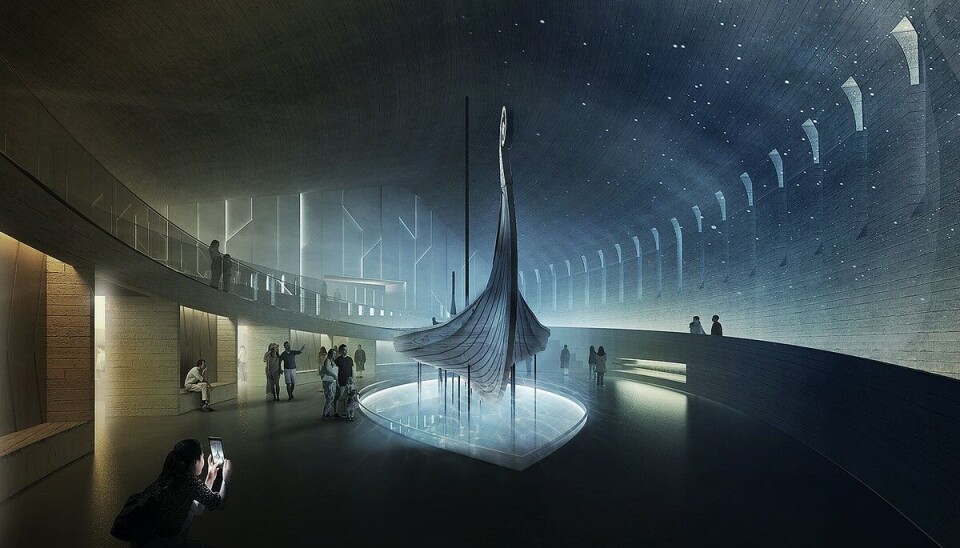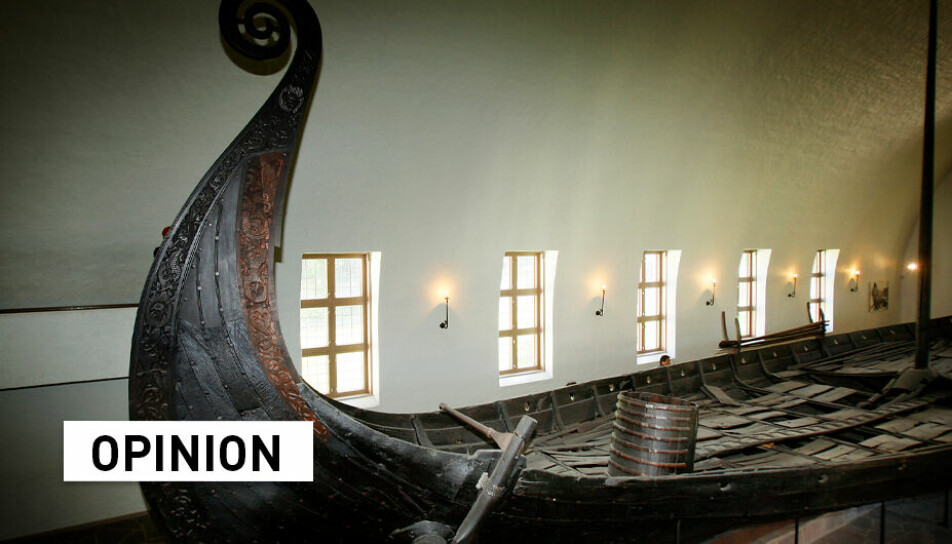
New report: Budget cuts put 1200 year old Viking ships at risk of being destroyed
Cutting costs means risking Norway’s greatest cultural heritage and largest tourist attraction. “We cannot allow this,” says Svein Stølen, rector at the University of Oslo.
The building of a new Viking Age Museum in Oslo was to start on August 1 this year. Doors were supposed to open in 2026.
But Norway’s Minister of Research and Higher Education, Ola Borten Moe, paused the entire project in early May, demanding that the process be reviewed in order to cut costs.
The University of Oslo and the Directorate of Public Construction were tasked with finding ways to make the museum happen within the original budget, and to deliver their report in the beginning of June.
- More about this here: The planned new Viking Age Museum in Oslo told to cut a billion NOK
The report, as well as an evaluation of the report done by Holte Consulting, are now in, and the conclusion is clear: There is no way a museum can be built within the original budget and at the same time meet the overarching goal of securing the cultural heritage that is the Viking Ships and artefacts.
The report also states that delaying the project poses considerable risks to the rather frail artefacts, who have for a long time suffered the consequences of being housed in an unfit building.
“A possible delay entails a significant risk that our irreplaceable and fragile Viking Age heritage will be destroyed,” Svein Stølen, rector at the University of Oslo, says in a press release.
He also points out that a possible redesign of the project means that large, accrued investment costs will be lost.
“Furthermore, a postponed opening of a new museum will result in a lost income of 100 million NOK a year for the University of Oslo,” he says.
Securing irreplaceable cultural heritage
A new Viking Age museum is not simply an ordinary building project, it is a project meant to secure irreplaceable historical items for future generations, the report's summary states. Securing these items means creating stability for the Viking ships – and no vibration as was the case in the old museum. It means securing an indoor climate that preserves the items, as well as securing this treasure against fire hazards.
“A new building is in itself the most important security measure,” the report states.
Securing the items is a demand. But cost measures is one of the most important goals on which the project is measured. There is a clear conflict here between security and costs, the report finds.
“Every delay in this project means exposing the collection to considerable risk,” the Directorate of Public Construction write in their report. “The project is currently in a critical phase where it is in reality too late to stop or to change course,” the Directorate writes.
The budget for the museum, set by the Norwegian Parliament, was around 2,14 billion NOK. The new estimates suggest that it may cost up to 3,14 billion NOK – roughly 326 million USD.
There are multiple reasons for why the costs of the project have increased, the Directorate of Public Construction write in a press release (Link in Norwegian). The measures to secure the Viking Ships and artefacts are more comprehensive than expected, the complexity in the building’s geometry has been underestimated, and finally there has been a sharp rise in prices in the market.
Little to be gained
The analysis finds that the original plan, which was chosen among 111 participants in an international architectural contest in 2016, is the only plan that meets the demand of securing the Viking Age heritage – as well as creates a world wide attraction capable of welcoming around a million visitors each year.
The report also finds that there is little to be saved from measures such as reducing the space, reducing the quality of the materials, removing specific plans targeted at children and youth and establishing a simple kiosk rather than a restaurant, according to the press release from the University of Oslo.
At the same time, saving money on these sorts of measures will reduce the use and benefit of a new museum, as well as reduce the museum's revenues.
“Significant changes in the concept will mean that we need extensive redesign, and a real risk of being left with a very reduced and significantly delayed museum, without even succeeding in saving money. This is a very bad option. It is simply wasting an incredibly important investment for Norway,” Stølen says.
------
The report and the evaluation are only available in Norwegian:
Revidert prosjekt for Vikingtidsmuseet (Statsbygg.no)
Rapport fra Holte Consulting om Statsbygg sitt arbeid vedrørende nedskalering av Vikingtidsmuseet (pdf)

































